PHOTOS: Lucid, Ross Inducted Into Astronaut Hall of Fame
By Space Coast Daily // May 7, 2014
held at Kennedy Space Center Visitor Complex

CLICK HERE TO SEE THE PHOTO GALLERY
BREVARD COUNTY, FLORIA — Veteran astronauts Shannon Lucid and Jerry Ross were inducted into the Astronaut Hall of Fame last week.
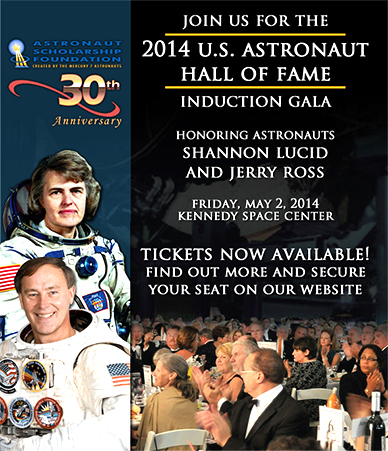
Lucid is the only American woman to serve aboard the Russian Space Station Mir and the first human to complete seven space shuttle missions.
The ceremony was held at Kennedy Space Center Visitor Complex to honor these two extraordinary astronauts as they join the ranks of well-known space explorers like Alan Shepard, John Glenn, Neil Armstrong, John Young and Sally Ride.
Lucid and Ross were selected by NASA to become astronauts within a couple years of each other; Lucid in 1978 and Ross in 1980. Now retired, both achieved honorable milestones throughout their careers with NASA.
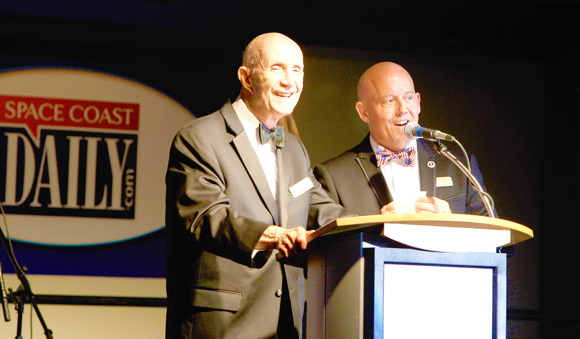
CLICK HERE TO SEE THE PHOTO GALLERY
Lucid joined the first U.S. astronaut class to include women while holding a record until 2007 for the most flight hours in orbit by a female astronaut (5,354 hours, or 223 days).
Ross was the first to break the world record for being the first human launched into space seven times Past inductees were a part of the Mercury, Gemini, Apollo and Skylab programs.
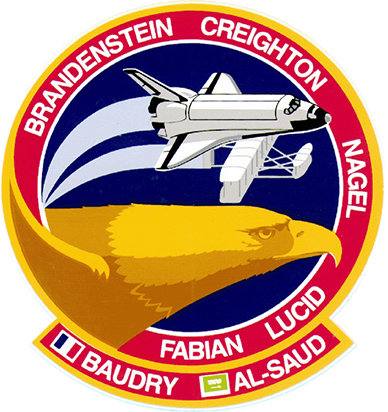
Welcoming Lucid and Ross marks the thirteenth group of space shuttle astronauts named to the Astronaut Hall of Fame. The addition of these two accomplished astronauts brings the total number of members to 87.
Shannon Lucid, Ph.D., is a veteran of five space flights. She boarded Discovery seven years later on June 17, 1985, for her first mission, STS-51G. On this mission, they deployed and retrieved the Spartan satellite along with several other communication satellites.
On March 22, 1996, Lucid launched aboard STS-76 Atlantis toward the Russian Space Station Mir. She spent 188 days working as Board Engineer 2 on life and physical science experiments. Lucid is the only American woman to have served on the Mir. President Clinton presented Lucid with the Congressional Space Medal of Honor in December 1996 for her mission to Mir, becoming the first woman to receive this award. Lucid’s other missions include STS-34 Atlantis, STS-43 Atlantis and STS-58 Columbia.
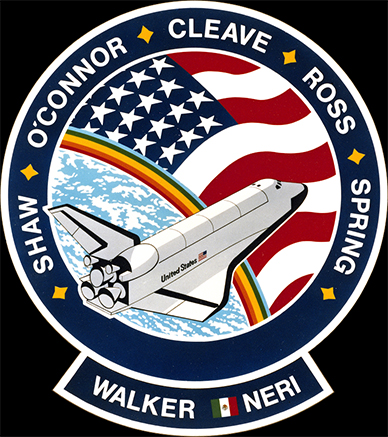
After serving on Mir, Lucid became NASA’s Chief Scientist at their headquarters in Washington D.C. She then went on to serve as a CAPCOM in Mission Control helping her fellow astronauts in space. Lucid retired from NASA in January 2012.
Jerry Ross is a retired NASA astronaut and United States Air Force colonel. Ross entered active duty with the Air Force in 1972 and his time in the Air Force led Ross to become a payload officer/flight controller at the Lyndon B. Johnson Space Center in 1979.
Ross flew as a mission specialist for six of his record holding seven flights to space, and has logged 1,393 hours in space, including 58 hours, 18 minutes during nine spacewalks.
The 2014 inductees were selected by a committee of current Hall of Fame astronauts, former NASA officials, flight directors, historians and journalists. The process is administered by the Astronaut Scholarship Foundation. To be eligible, an astronaut must have made his or her first flight at least 17 years before the induction year and must be retired at least five years from the NASA astronaut corps.
Candidates must be a U.S. citizen and a NASA-trained commander, pilot or mission specialist who has orbited the earth at least once.
Ross spent a considerable amount of time working on the International Space Station (ISS) between 1998 and 2002. Endeavour launched the first ISS assembly mission, STS-88, on Dec. 4, 1998.
It was a 12-day mission during which Ross completed three spacewalks and aided in connecting umbilicals between the U.S. Unity module and the unmanned Russian Zarya module. Five of Ross’s seven flights were flown on space shuttle Atlantis.
From his first launch into space on Nov. 26, 1986, aboard STS-61B Atlantis, to his last on April 8, 2002, with STS- 110 Atlantis, he also flew on STS-27 Atlantis, STS-37 Atlantis, STS-55 Columbia and STS-74 Atlantis.
Throughout his career, Ross received 15 NASA medals and was awarded the American Astronautical Society’s Victor A. Prather Award for his numerous spacewalking achievements. Before retiring from NASA in January 2012, Ross served as chief of the Vehicle Integration Test Office at Johnson Space Center from 2003-2011.
“Spacewalker: My Journey in Space and Faith as NASA’s Record-Setting Frequent Flyer” is Ross’s recently published autobiography.
Lucid, Ross Leave Incredible Legacy
SHANNON LUCID BIOGRAPHY
Shannon W. Lucid, Ph.D. was selected by NASA in January 1978 and became an astronaut in August 1979 as part of the first U.S. astronaut class to include women.
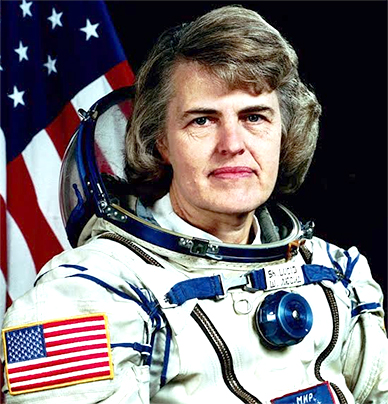
A veteran of five space flights, including one stay on the Russian space station Mir, she has logged over 5,354 hours – 223 days – in space.
She set a record for the most flight hours in orbit by a female astronaut, which she held until 2007, and remains the only American woman to have served aboard Mir. Lucid launched aboard Discovery on June 17, 1985 on her first mission, STS-51G.
The crew deployed several communications satellites and used the Remote Manipulator System (RMS) to deploy and retrieve the SPARTAN satellite, which performed X-ray astronomy experiments while separated from Discovery.
The crew also participated in biomedical experiments and performed other mission objectives. STS-34 saw Lucid lift off aboard Atlantis on October 18, 1989, with objectives of deploying the Galileo spacecraft on its mission to explore Jupiter, operating the Shuttle Solar Backscatter Ultraviolet Instrument (SSBUV), and performing numerous other experiments. Lucid returned to space aboard Atlantis once more as a mission specialist for STS-43, which launched on August 2, 1991.
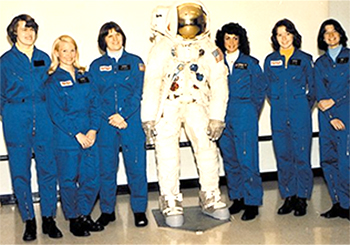
The crew deployed the fifth Tracking and Data Relay Satellite (TDRS-E) and conducted 32 physical, material, and life science experiments. On October 18, 1993, Lucid launched aboard Columbia for STS-58. The crew performed many medical experiments, expanding our knowledge of human and animal physiology.
They also performed engineering tests and Extended Duration Orbiter Medical Project experiments. This 14-day mission was recognized by NASA as the agency’s most successful and efficient Spacelab flight.
After a year of training in Star City, Russia, Lucid lifted off aboard STS-76 Atlantis on March 22, 1996 and was transported to the Russian space station Mir.
Lucid spent 188 days on the station serving as Board Engineer 2 for the Mir EO-21 mission, performing life and physical science experiments. She was the second American to have a long-duration stay aboard Mir. She returned to Earth aboard STS-79 Atlantis on September 26, 1996.
LUCID ALSO WORKED IN THE SHUTTLE AVIONICS INTEGRATION LAB
Besides working as an astronaut, Lucid also worked in the Shuttle Avionics Integration Laboratory (SAIL); the Flight Software Laboratory; the Astronaut Office, where she worked on payload testing, Shuttle testing, and launch countdowns; as a CAPCOM at Johnson Space Center Mission Control Center; as Chief of Mission Support and Chief of Astronaut Appearances; and as NASA’s Chief Scientist at NASA Headquarters in Washington, D.C. Lucid retired from NASA in January 2012.
JERRY ROSS BIOGRAPHY
Jerry L. Ross (Colonel, USAF, Ret.) was selected by NASA to become an astronaut in May 1980.
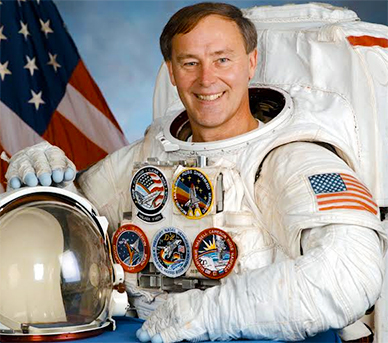
He was the first human to be launched into space seven times. Ross logged more than 1,393 hours in space, including 58 hours and 18 minutes of time spent on EVA over a total of nine spacewalks.
His seven- spaceflight total is a record he now shares with only one other astronaut, and his number of spacewalks – as well as the time spent on spacewalks – are both the second-highest among U.S. astronauts and third-highest among astronauts worldwide. Ross first flew as a Mission Specialist on STS-61B, which launched on November 26, 1985, aboard Space Shuttle Atlantis.
The crew deployed three communications satellites and performed numerous experiments.
Ross conducted two spacewalks to evaluate potential space station construction techniques. Ross returned to space as a Mission Specialist for STS-27.
This U.S. Department of Defense mission launched aboard Atlantis on December 2, 1988. The crew deployed and activated a critical new national satellite system. Ross boarded Atlantis again on April 5, 1991, launching into space on STS-37 with a goal of deploying the 35,000-pound Compton Gamma Ray Observatory.
He performed an unplanned spacewalk to fix the $670 million observatory and another spacewalk to evaluate potential space station equipment.
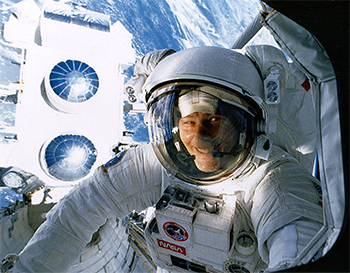
The German-sponsored Spacelab D-2 mission, STS-55, launched aboard Columbia on April 26, 1993.
Ross was the Payload Commander, leading the payload team that conducted nearly 90 experiments investigating life sciences, material sciences, physics, robotics, astronomy, the Earth, and the atmosphere. STS-74, the second space shuttle mission to rendezvous and dock with the Mir space station, launched November 12, 1995.
Ross and the crew of Atlantis were responsible for installing a permanent docking module on Mir for subsequent shuttle visits, as well as transferring supplies and equipment to the station. Ross served on STS-88, the first International Space Station assembly mission.
Endeavour launched on December 4, 1998 for a 12-day mission during which the crew attached the U.S. Unity module to the unmanned Russian Zarya module.
Ross performed three spacewalks, connecting umbilicals and attaching antennas and other equipment to the exterior of these modules. Ross returned to Atlantis for a fifth time on his seventh and final mission, STS-110, which launched on April 8, 2002.
This mission was the first in the final phase of International Space Station assembly.
ROSS IS ALSO WORKING ON A CHILDREN’S BOOK
Ross performed two of the mission’s four spacewalks to install the critical center section of the truss, the S- Zero element, to the station.
Ross served as Chief of the Vehicle Integration Test Office at Johnson Space Center from 2003 to 2011 before his retirement from NASA in 2012.
He recently published an autobiography, entitled “Spacewalker: My Journey in Space and Faith as NASA’s Record-Setting Frequent Flyer.” He will release a children’s book, “Spacewalker: My Journey to the Stars, based upon this autobiography later in 2014.












